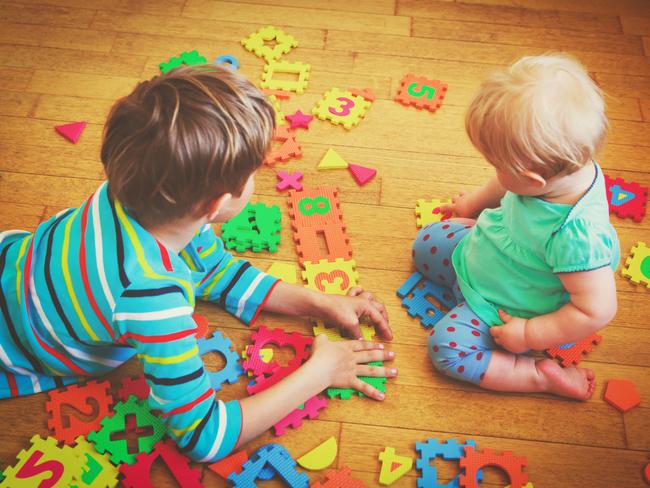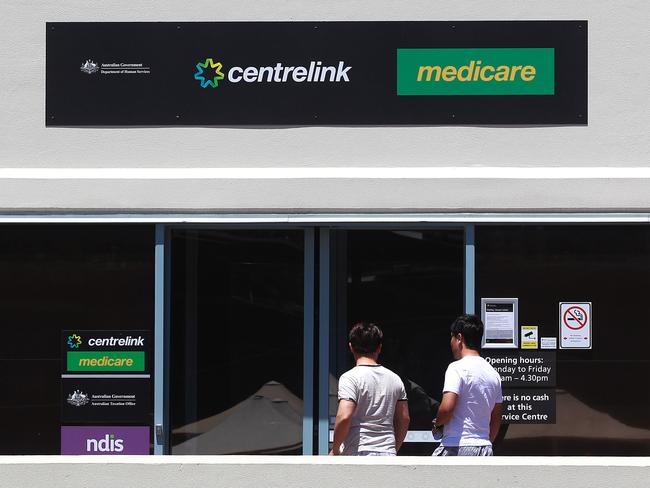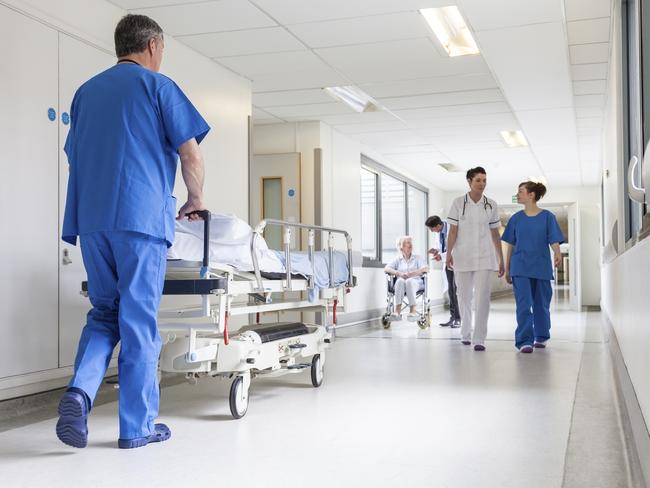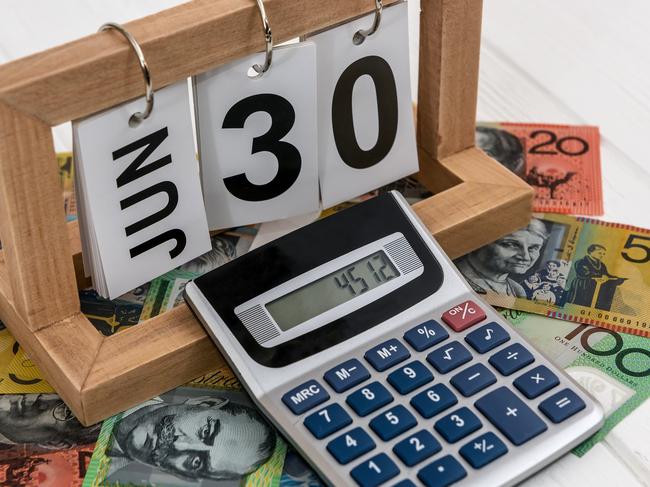Millennials’ guide to the 2019 Australian federal election
With the federal election just over a week away, now is the time to work out who’ll get your vote. Here’s what the major parties and the Greens have pledged.
Not sure who to vote for?
Here’s what the major parties and the Greens say they’ll do about the big issues, from school and health funding to wages and climate change.
HOUSING

Jokes about smashed avocado aside, housing is a hot-button issue for most young Australians. One in three ‘millennial’ voters said it was one of their key concerns this election. Here’s what the parties are offering.
LABOR
Labor’s housing policy will impact people who want to buy investment properties, and it comes into effect from January 1 next year.
The party wants to limit negative gearing to new housing and halve the capital gains tax discount from 50 to 25 per cent.
They argue that this will help improve housing affordability by reducing the number of investors wanting to buy existing properties.
They also claim it will boost housing construction by creating more demand for new houses.
Any investors who have bought properties before January 1 won’t be affected by the change.
COALITION
The Morrison Government has warned against Labor’s changes to negative gearing and capital gains tax, saying they will reduce house prices and increase rent.
The Coalition’s 2019 budget didn’t pledge anything new to help first home buyers but in 2017 they passed a scheme which allowed people to save a deposit by putting up to $30,000 pre-tax into their superannuation which could be later withdrawn for a house.
GREENS
The Greens want to go even further than Labor by phasing out negative gearing entirely over five years.
They also want to wind back Capital Gains Tax.
The party also wants to establish a national standard for residential tenancy agreements, which, among other things, will ban any blanket ‘no pets’ rules.
EDUCATION AND TRAINING

TAFE and school funding are key battlegrounds this election. Here’s what the parties are promising and a bit of mythbusting about their claims.
LABOR
Labor is promising $14 billion extra for school funding in addition to the $23.5 billion the government has already put towards schools over the next decade.
TAFE campuses will get an upgrade under a $200 million package to renovate campuses.
Labor will also pay the upfront fees for 100,000 TAFE places, including 20,000 for new aged care and disability workers.
Mythbusting: Labor’s claim that the Coalition has cut $14 billion from schools is misleading. Labor does intend to spend more than the Coalition, it’s true, but federal funding hasn’t been cut. It will rise year on year as part of the $23.5 billion package the Coalition already has legislated for school funding over a decade.
COALITION
The Coalition legislated $23.5 billion extra for school funding over a decade in 2017 as part of its Gonski-inspired reform of how federal funding was allocated to schools.
It then committed an extra $4.5 billion for private schools in 2018 after a backlash from the Catholic sector.
The Coalition has also pledged $156.3 million for 80,000 apprenticeships over five years and will double incentive payments for employers to $8000 to hire apprentices.
Apprentices will also receive $2000 to go into priority skills areas.
The Coalition has also pledged funding for a new scholarship for more than 1000 students a year to study regionally and a local school community program to provide library and playground upgrades.
GREENS
The Greens will push to provide free undergraduate university degrees and TAFE for all students. University in Australia was free from 1974 to 1989 but both major parties agreed it was unsustainable in the mid 1980s.
The Greens also want to increase public school funding by $20.5 billion over 10 years.
WAGES

Wage growth has been stagnant for about five years in Australia.
Here’s what the parties are promising to help workers get a pay rise.
LABOR
Labor wants to alter how the minimum wage is calculated so it’s a “living wage”. The plan involves getting the Fair Work Commission to decide what a living wage should be and then how long it could be phased in, taking into account “the capacity of businesses to pay” and the potential impact on employment, inflation and the broader economy.
Childcare workers will get a direct 20 per cent pay rise over eight years under a Labor government, although the party has yet to explain how this will be enforced or delivered.
Bill Shorten has ruled out offering direct pay rises to other sectors.
COALITION
The Coalition doesn’t have a specific wages policy but says wages will rise as a result of its policies to grow the economy and boost trade. The 2019 budget predicted wages would rise from 2.3 per cent to 3.5 per cent by 2023 because of a tighter labour market. Unemployment was forecast to stay at 5 per cent.
In their second leaders’ debate, Scott Morrison cautioned Bill Shorten against saying the government could intervene to give workers pay rises.
GREENS
The Greens are also pushing for a “living wage”.
CHILDCARE/ PRE-SCHOOL

LABOR
Labor has committed to spend $4 billion to boost the childcare rebate for 887,000 families.
Low income families, earning up to $69,000, would get their child care free.
Families on incomes up to $174,000 would get an extra $1200 a year per child off their child care.
The party will also commit $1.75 billion for 15 hours of pre-school for three and four-year-olds, although pre-school for three-year-olds won’t kick in until the beginning of the 2021 school year.
COALITION
The Coalition will commit $453m to extend 15 hours of preschool for another year and will also add $5m to boost preschool attendance.
The Morrison government wants to review how pre-school funding is delivered by both the states and federal government.
GREENS
The Greens want to provide universal kindergarten and pre-school for three and four year olds for 24 hours a week.
They also want to make childcare free for families with incomes up to $171,958 by covering 100 per cent of their fees.
They would cover up to 50 per cent of the childcare costs for families earning up to $251,248 and gradually reduce the coverage to zero for families earning up to $351,248.
They also want to abolish the activity test for childcare rebates, which means parents won’t have to have a job, be studying or actively looking for work to receive the payment.
NEWSTART

Newstart is the main welfare payment for jobseekers in Australia. The payment hasn’t increased in real terms in Australia for more than 20 years. Its recipients currently get $278 a week - about $40 a day. It increased by $5.50 a fortnight in March.
The Australian Council of Social Services argues people on Newstart are living below the poverty line and the payment should increased by at least $75 per week.
Here’s what the parties say:
LABOR
Labor says it acknowledges Newstart is too low but hasn’t set a figure for an increase. The ALP has pledged to review all welfare payments within 18 months if it wins government.
COALITION
Scott Morrison has rejected the push to increase the Newstart allowance and says the best form of welfare is a job. He says Australia has “one of the best safety nets” in the world.
“The way you keep that system in place is that you ensure you get more people into work, so the budget that supports those payments is not coming under the stress it otherwise might be,” the PM said in week one of the election campaign.
GREENS
The Greens have pledged to lobby for Newstart and Youth Allowance to increase by $75 per week if they are elected to seats in the House of Representatives or Senate.
HEALTH

LABOR
Labor has pledged $2.3 billion to slash medical bills for cancer patients, including funding six million free scans, three million specialist consults, and putting new drugs on the PBS.
The party has also committed $2.8 billion for hospital funding and $500 million to improve emergency departments.
Labor promised to fund hospitals 50-50 with states, although that won’t come into effect until 2024.
They also want to cap private health insurance rises at 2 per cent for two years.
COALITION
The Coalition has committed $1.3 billion over seven years from 2018-19 to upgrade the nation’s health and hospital system.
It has pledged $736.6 million for mental health funding.
There will be $309 million to improve access to diagnostic imaging, such as MRI scans.
It has also committed $187 million to increase patient rebates for 119 GP service items from 1 July 2019.
Health Minister Greg Hunt has also said the government would increase the private health insurance rebate to 30 per cent of the cost of premiums once it has a “sustainable” budget surplus.
The 2019 budget also included $331 million for new and amended listings on the Pharmaceutical Benefits Scheme (PBS), including medicines to treat lung, bladder, kidney and skin cancers, and leukaemia.
GREENS
The Greens want to put $5.8 billion towards Medicare-funded dental care to all young people, aged pensioners, full benefit recipients and concession card holders.
They also want to stop “propping up” private health insurance companies and redirect the funds to the public health system.
The party also wants to establish an Independent Preventive Health Commission to deliver programs to tackle health issues such as obesity, diabetes or heart disease.
TAX

LABOR
Labor will match the Liberal’s tax cuts for workers on $45,000 to $126,000 for next three years, but won’t change the 32.5 per cent tax bracket to 30 per cent.
They are also offering tax cuts for workers earning $45,000 and below.
Labor won’t match the Coalition’s promise to abolish the 37.5 per cent tax bracket.
They will also axe tax refunds for franking credits.
And the party will reintroduce the 2 per cent temporary budget repair levy on workers earning $180,000 and above until 2023.
COALITION
The Coalition will offer hip pocket relief of up to $1080 for singles or up to $2160 for dual income families in a $302 billion tax cuts package.
Ten million Australians will receive some benefit while 4.5 million individuals will get the full tax cut.
The Coalition will also reduce the 32.5 per cent tax bracket to 30 per cent in 2024-25 and abolish the 37 per cent tax bracket, meaning 94 per cent of taxpayers will pay a marginal tax rate of 30 per cent or less.
GREENS
The Greens want to reverse the personal income tax cuts already legislated last year so Aussies wouldn’t see that extra hip pocket relief. This money would be invested in public services instead.
The Greens also want to reverse company tax cuts for businesses earning more than $10 million per year by restoring the tax rate to 30 per cent.
CLIMATE

LABOR
Labor wants to slash carbon emissions by 45 per cent by 2030.
It’s plan to do that includes increasing the number of big industrial polluters that are captured by the current emissions cap to about 250 companies. It will do that by lowering the threshold of acceptable emissions from 100 kilotonnes of CO2 emissions a year to 25 kilotonnes. Companies that emit over the threshold would have to buy carbon credits, including from overseas, to offset their emissions.
Anyone who emits under the threshold can earn carbon credits.
Labor has also set itself a target of 50 per cent new car sales being electric cars by 2030.
It will also introduce tree clearing restrictions.
One of the biggest points of contention during the election campaign is that Bill Shorten and his frontbench team have not said how much Labor’s climate plan will cost.
They argue it won’t have a cost because the economy will continue to grow.
COALITION
The Coalition has a target of reducing emissions by 26 per cent by 2030.
It will maintain the current emissions threshold for companies.
The Morrison Government has also pledged $3.8 billion in funding for environmental issues.
That includes $2 billion over 15 years for a ‘Climate Solutions Fund’ to reduce emissions, funding for Snowy Hydro 2.0, funding to support local businesses improve their energy efficiency and $400,000 to develop a national electric vehicle strategy.
GREENS
The Greens want to phase out coal and move to 100 per cent renewable energy.
They will also mandate a set number of electric car sales for manufacturers.


